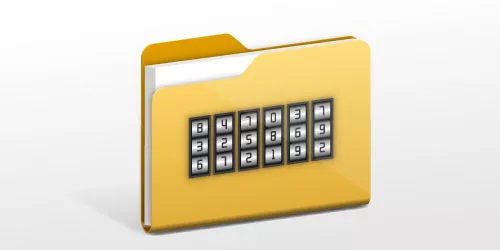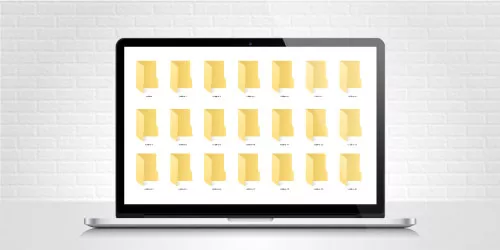How to Sort Files and Folders Together in Windows Explorer
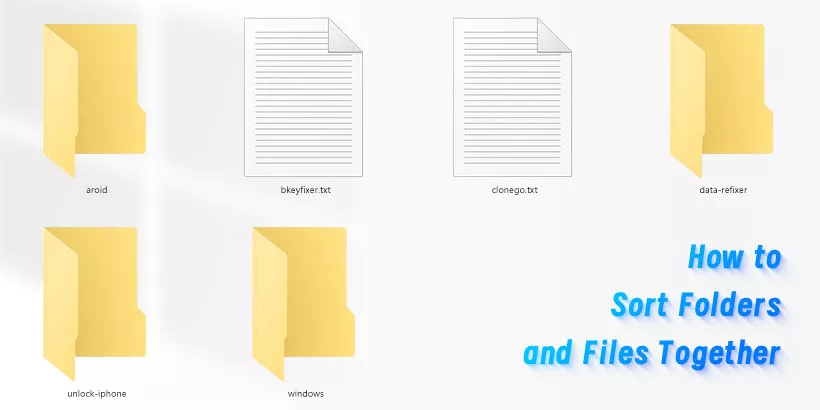
Managing files and folders in Windows Explorer can be challenging, especially when you have related files like Markdown documents and their associated image folders, or movies and their subtitle folders. For example, Typora users might find it easier to keep their ".md" files alongside their image resources for better organization. However, Windows Explorer doesn't offer this feature natively. Fortunately, there are a few workarounds that can help you achieve a similar effect. This article explores three methods to sort folders and files together in Windows Explorer.
1. Create Folder Shortcuts for Mixed Sorting
One way to mix files and folders in Windows Explorer is by using shortcuts. This method doesn't change how Windows sorts files internally but helps you visually arrange files and folders together.
Step 1: In the folder you want to organize, create a shortcut for each folder that you want to sort alongside your files.
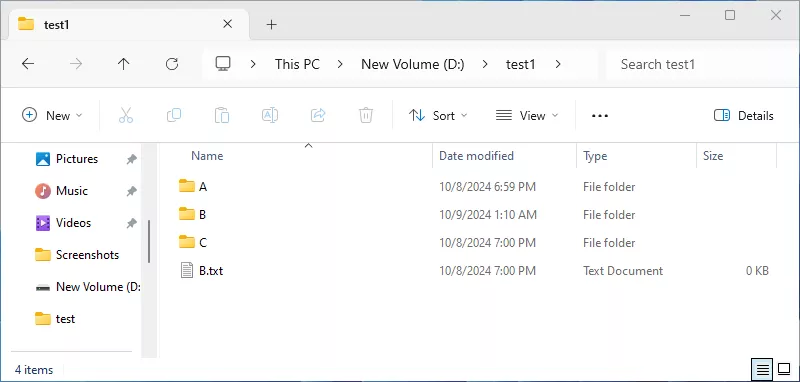
Step 2: Create a new folder in your current directory and name it something like "Folder Library." Then, move all your original folders into this new directory while keeping their shortcuts in the main directory.
Step 3: Now, the files and the folder shortcuts are in the same view.
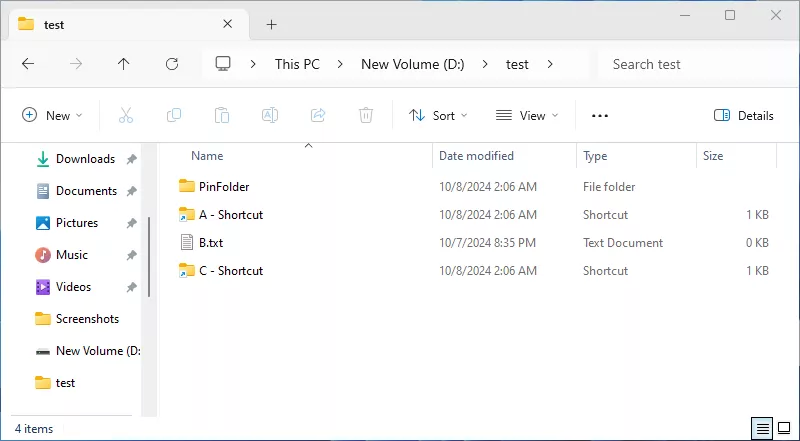
You can right-click and choose Sort by > Name or any other preferred sorting option. This arrangement gives the appearance of mixed sorting, as the shortcuts will be sorted alongside regular files.
This method is effective if you have a few folders that you want to keep with specific files. However, it may become cumbersome if you have many folders, as managing the shortcuts could become time-consuming.
2. Use Third-Party Software for Mixed Sorting
For those seeking a more direct approach to sorting files and folders together, using a third-party file manager like FreeCommander is a practical option. FreeCommander allows you to customize how files and folders are displayed, making it a great choice for users who frequently need this functionality.
Step 1: Visit the official website of FreeCommander and download the application. Follow the installation instructions to set it up.
Step 2: Open FreeCommander, then navigate to Tools > Settings. In the settings window, go to View > File/folder list and select the Sorting tab.
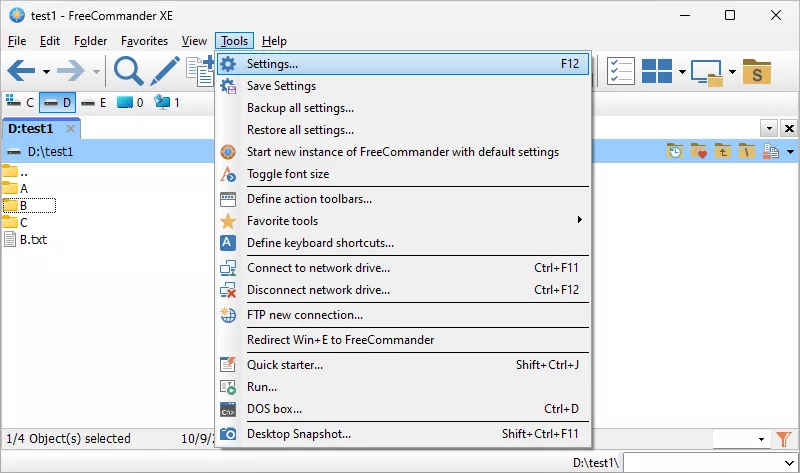
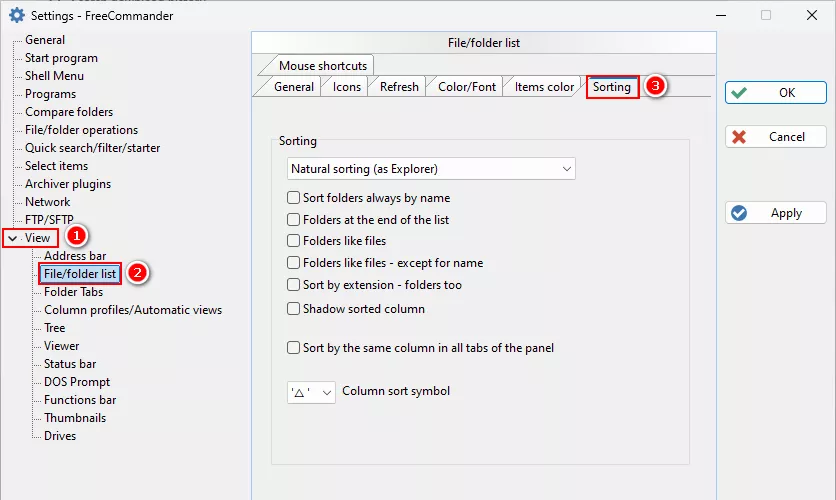
Tip: Press F10 to switch between dual panel and one panel.
Step 3: In the Sorting section, check the Folders like files option. This allows folders to be sorted in the same manner as files, instead of being grouped separately.
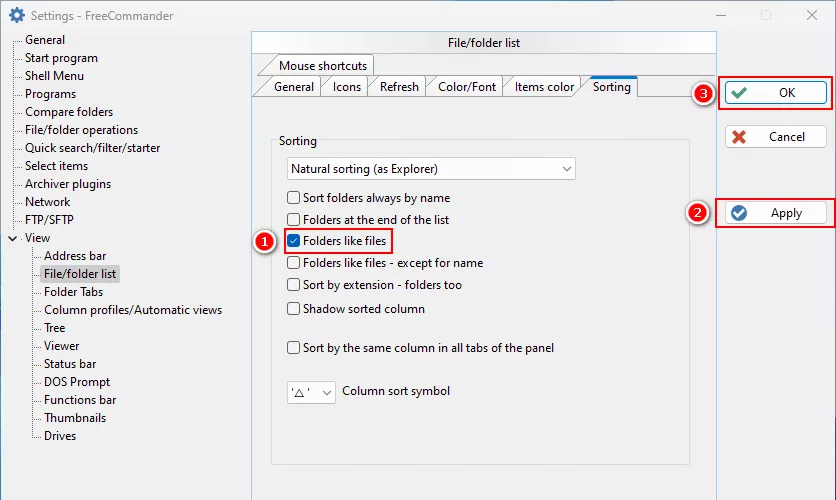
Step 4: Click Apply, then OK to save your changes.
Now, when you open a directory in FreeCommander, files and folders will appear in the same list according to your sorting preferences.
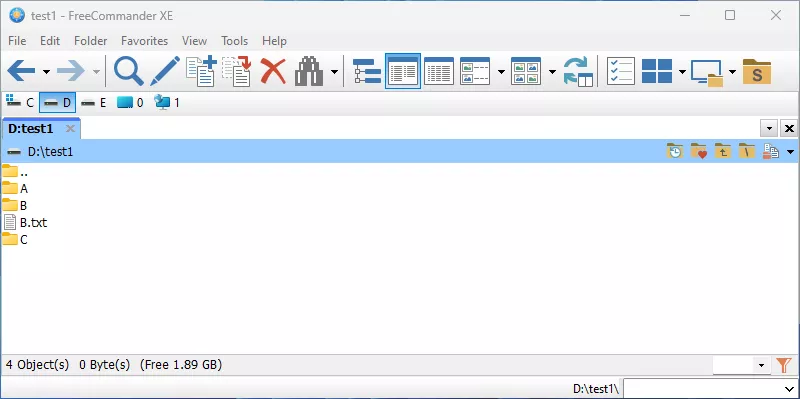
FreeCommander provides a more powerful solution for those who need mixed sorting frequently. It also comes with additional features that may enhance your file management experience.
3. Use Compressed Archives for Mixed Sorting
If you are organizing archived folders, like old projects or files that you don't need to access often, another option is to create compressed archives. This method doesn't directly mix files and folders, but it can simplify your file structure by turning folders into files.
Step 1: Select the folders you want to manage, right-click them, and choose Send to > Compressed (zipped) folder. This will create a ".zip" file containing all the contents of the selected folder.
Step 2: After creating the compressed file, you can delete the original folder, leaving only the compressed version in the directory.
Step 3: The zipped files will now appear in the directory as regular files. This allows you to sort them alongside other files using Sort by > Name or any other sorting method.
This method is best used when you need to store folders as archives for future reference, but don't need to frequently access the contents. It's an effective way to reduce clutter while keeping everything organized.
4. Summary
Microsoft's decision to keep files and folders sorted separately in Windows Explorer likely stems from user habits and considerations of file system design. While this default sorting works for many, some users need the flexibility to mix folders and files in the same view. By using folder shortcuts, third-party software like FreeCommander, or creating zip archives, you can achieve a similar result. Choose the method that best suits your workflow, and enjoy a more streamlined file management experience.


